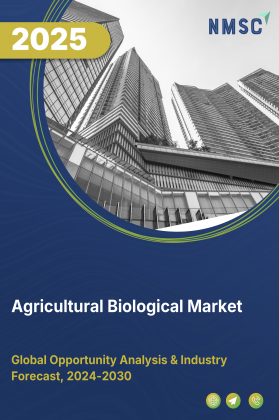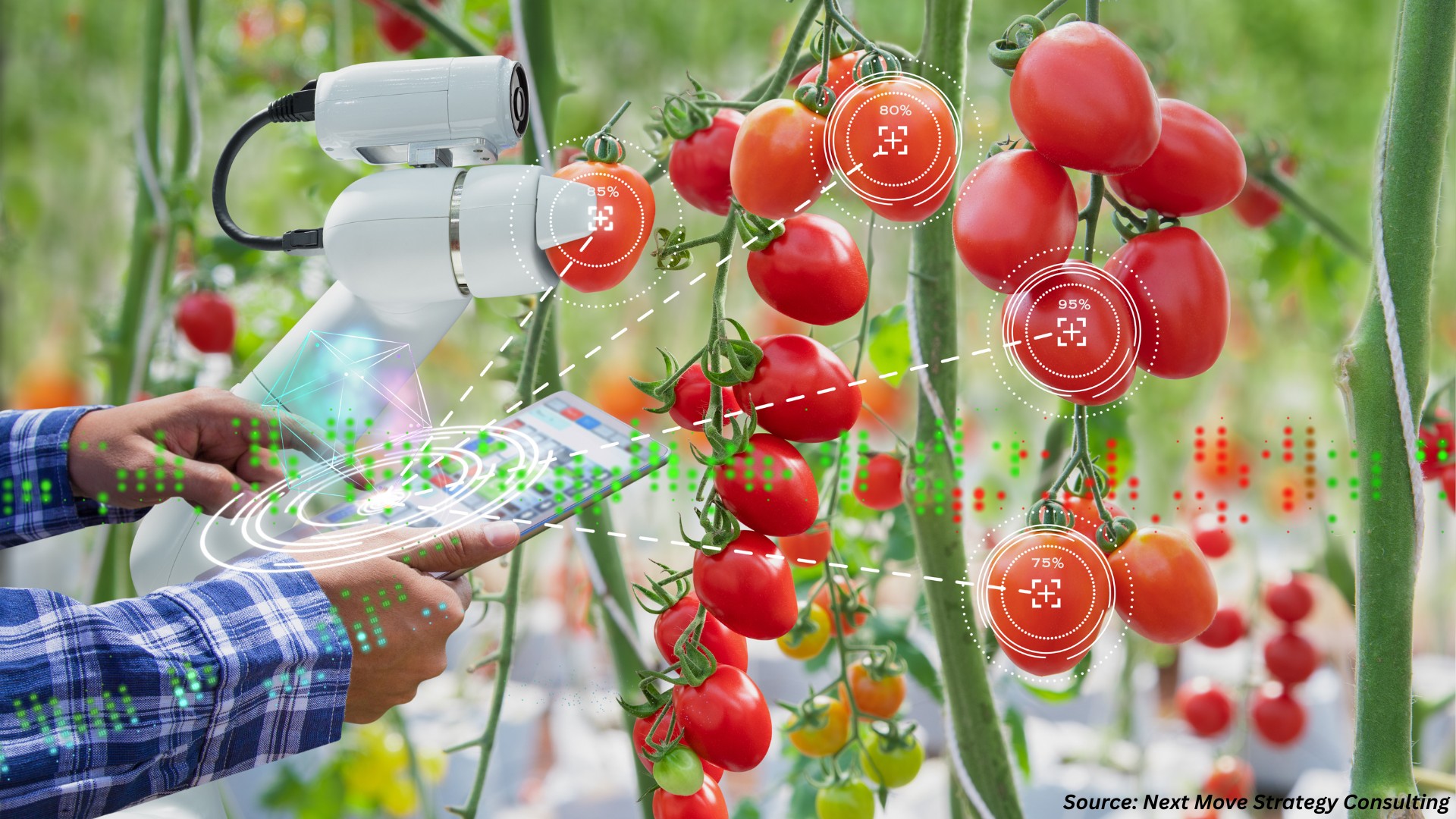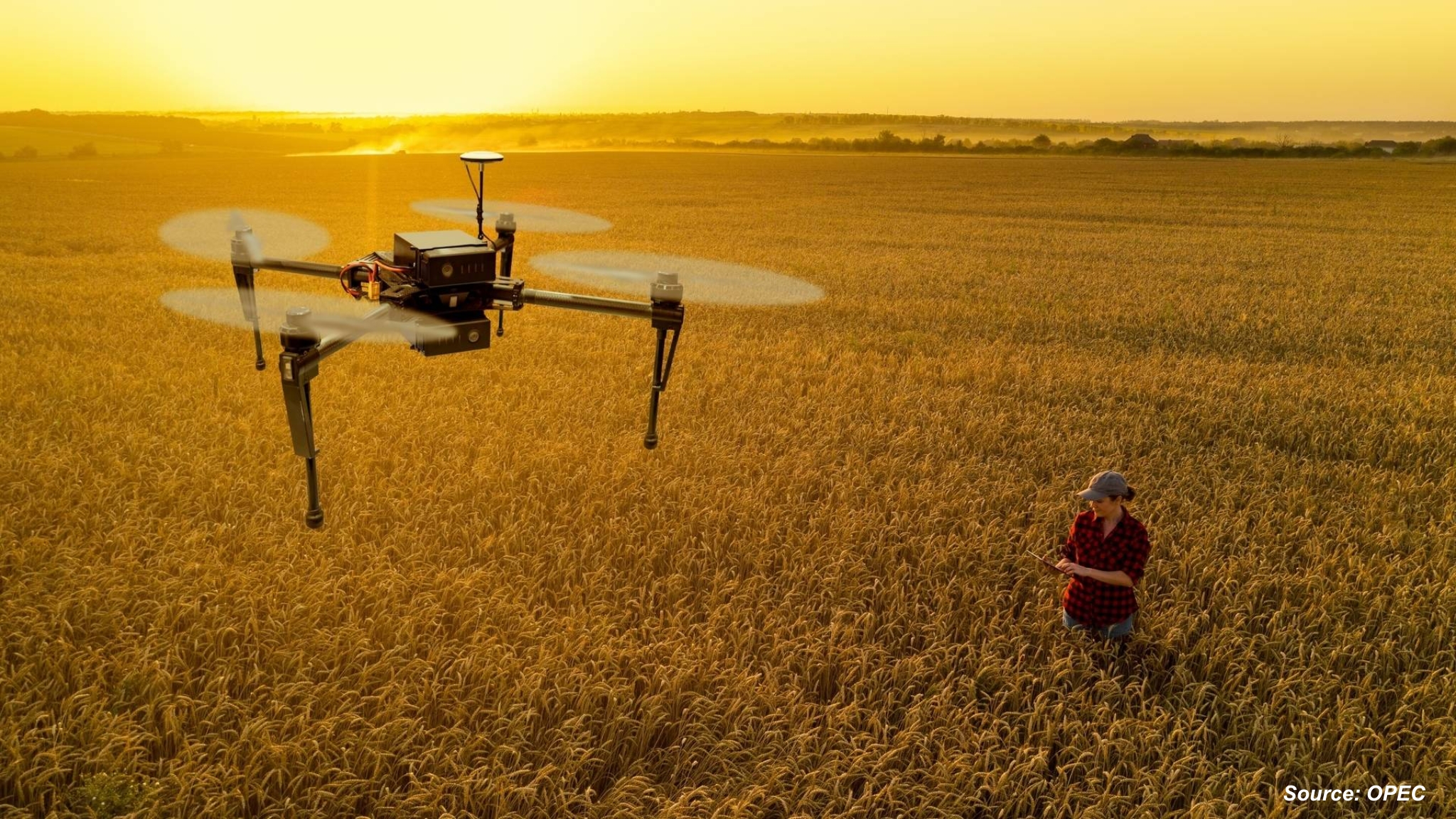
India Agriculture Robots Market by Type (Unmanned Aerial Vehicles (UAVs), Milking Robots, Driverless Tractors, Driverless Tractors, Automated Harvest Robots, and Others), by Farming Type (Indoor Farming, Outdoor Farming, and Indoor & Outdoor), by Application (Aerial Monitoring & Scouting, Dairy & Livestock Automation, Field Operations, Harvest Management, and Others)– Opportunity Analysis and Industry Forecast 2023–2030
Industry: Agriculture | Publish Date: 24-Oct-2025 | No of Pages: 148 | No. of Tables: 99 | No. of Figures: 56 | Format: PDF | Report Code : AG633
Market Definition
India Agriculture Robots Market size was valued at USD 91.36 million in 2022, and is predicted to reach USD 544.35 million by 2030, with a CAGR of 23.6% during the forecast period, 2023–2030. Agricultural robots are machines that use advanced technology to perform tasks in farming, such as planting, harvesting, monitoring, and spraying crops. They are designed to improve efficiency, production, and precision in agriculture, while reducing the need for manual labor and improving the working conditions of farmers.
Agribots are sophisticated robots that use sensors, actuators, and algorithms to sense their surroundings, make decisions, and perform tasks. They use GPS or mapping technology to navigate through fields and perform a variety of agricultural activities, such as planting seeds, harvesting crops, applying pesticides or fertilizers, and monitoring crop health. They use computer vision technology to identify crops and weeds, detect pests and diseases, and take precise actions based on the information they gather
Adoption of Agricultural Robots in India Driven by Increasing Drone Usage in Precision Farming
India is expected to show a steady growth in the adoption of agricultural robots. This is attributed to factors such as increasing use of drones by Indian farmers in various agricultural applications such as crop monitoring, irrigation management, pesticide & fertilizer application, and land surveying.
Drones are becoming a popular tool in Indian agriculture sector for precision farming. They are utilized for crop monitoring through the collection of data on crop health, growth and yield through cameras and sensors. Also, drones equipped with infrared cameras help with irrigation management by mapping water stress in crops. Thus, expected to create significant growth of the market.
Rising Labor Costs and Shortages Drive the Adoption of Agriculture Robots in India
India's agriculture sector is facing challenges related to rising labor costs and shortages. The availability of skilled labor for manual agricultural tasks is decreasing, leading to increased labor costs. As a result, farmers are adopting agriculture robots as a solution for automating various operations, reducing the dependency on manual labor, and improving cost-efficiency for farmers. Thus, it is expected to boost the growth of the market within the country.
Financial Barriers Hindering Widespread Adoption of Agricultural Robots in India
One of the major factors impeding the widespread adoption of agricultural robots in India is the high initial investment required. Acquiring, integrating, and maintaining advanced robotic systems entails substantial costs, particularly for small-scale farmers or those with limited financial resources. The upfront expenses associated with purchasing the necessary technology and equipment, as well as training personnel to operate and maintain the robots, present a significant financial barrier. As a result, the extensive adoption of agriculture robots is hindered, thereby restraining the growth of the market.
Revolutionizing Precision Farming through Advanced Agriculture Robots in India
Agriculture robots equipped with modern sensor technology and data analytics skills have the potential to revolutionise precision farming in India. These robots can collect data on soil conditions, crop health, and environmental elements in real time. With the use of these robots farmers can make data-driven decisions, optimise resource allocation, and perform precise interventions such as targeted spraying, irrigation, and fertilisation by analysing this data. Precision farming facilitated by agricultural robots has the potential to increase crop yields, minimise resource waste, and improve overall sustainability. As a result, creating ample opportunities in the future for the market.
Competitive Landscape
The Agriculture Robots industry includes several market players such as Deere & Company (John Deere India Pvt. Ltd), Escorts Kubota Limited, Tractors and Farm Equipment Limited, Niqo Robotics Private Limited, XMachines Robotics Pvt. Ltd, FarmRobo Pvt. Ltd, FarmSathi Technologies Pvt. Ltd, Marut Dronetech Pvt. Ltd, Garuda Aerospace Pvt. Ltd, Thanos Technologies Pvt. Ltd, Suind Technologies Pvt. Ltd, Aigen (Aigen.io), and others.
Key Benefits
-
The India agriculture robots market report provides a quantitative analysis of the current market and estimations through 2023-2030 that assists in identifying the prevailing market opportunities to capitalize on.
-
The study comprises a deep dive analysis of the market trend including the current and future trends for depicting the prevalent investment pockets in the market.
-
The information related to key drivers, restraints, and opportunities and their impact on the market is provided in the report.
-
The competitive analysis of the market players along with their market share in the India agriculture robots market.
-
The SWOT analysis and Porter’s Five Forces model are elaborated in the study.
-
Value chain analysis in the market study provides a clear picture of the stakeholders’ roles.
India Agriculture Robots Market Key Segments
By Type
-
Unmanned Aerial Vehicles (UAVs)
-
Milking Robots
-
Driverless Tractors
-
Automated Harvest Robots
-
Others
By Farming Type
-
Indoor Farming
-
Outdoor Farming
-
Indoor & Outdoor
By Application
-
Aerial Monitoring & Scouting
-
Crop Protection & Weed Control
-
Crop Scouting & Monitoring
-
Weather Tracking
-
Inventory Management
-
-
Dairy & Livestock Automation
-
Milking
-
Dairy Management
-
Shepherding and Herding
-
-
Field Operations
-
Plowing
-
Seeding
-
Field Farming
-
Soil & Irrigation Management
-
-
Harvest Management
-
Others
Key Players
-
Deere & Company (John Deere India Pvt. Ltd)
-
Escorts Kubota Limited
-
Tractors and Farm Equipment Limited
-
Niqo Robotics Private Limited
-
XMachines Robotics Pvt. Ltd
-
FarmRobo Pvt. Ltd
-
FarmSathi Technologies Pvt. Ltd
-
Marut Dronetech Pvt. Ltd
-
Garuda Aerospace Pvt. Ltd
-
Thanos Technologies Pvt. Ltd
-
Suind Technologies Pvt. Ltd
-
Aigen (Aigen.io)

















 Speak to Our Analyst
Speak to Our Analyst

























